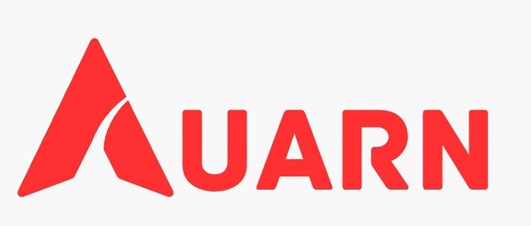The Evolution of Banking Services

Banking is one of the oldest and most essential services in the world. It enables people to save, borrow, invest, and transact money for various purposes. Banking has also evolved, adapting to customers' changing needs and preferences, as well as the advancements in technology and innovation.
In this blog, we will explore how banking services have transformed from traditional to digital and what are the benefits and challenges of this transition.
What are traditional banking services?
Traditional banking services are the banking activities and products offered by physical branches of banks or other financial institutions. These include:
- Deposits: Customers can open savings or current accounts and deposit their money in the bank. They can also earn interest on deposits and withdraw cash from ATMs or branches.
- Loans: Customers can borrow money from the bank for various purposes, such as personal, home, car, education, or business loans. They must repay the loan amount, interest, and fees over time.
- Payments: Customers can make or receive payments through cheques, demand drafts, money orders, or cash. They can also use debit or credit cards for online or offline transactions.
- Investments: Customers can invest their money in various financial instruments, such as fixed deposits, mutual funds, stocks, bonds, or insurance. They can also get advice from financial experts on managing their portfolios.
- Other services: Customers can also avail additional services from the bank, such as locker facilities, foreign exchange, remittance, tax filing, etc.
What are digital banking services?
Digital banking services are the banking activities and products offered by online platforms or mobile applications of banks or other financial institutions. These include:
- Deposits: Customers can open digital accounts and deposit their money in the bank through online transfers or mobile wallets. They can also earn higher interest on deposits and withdraw cash from partner outlets or ATMs.
- Loans: Customers can apply for instant loans from the bank through online platforms or mobile applications. They have to provide minimal documentation and get quick approval and disbursal of funds. They can also repay the loan amount through online modes or auto-debit facilities.
- Payments: Customers can make or receive payments through digital modes, such as UPI, QR codes, NEFT, RTGS, IMPS, or mobile wallets. They can also use virtual cards or biometric authentication for online or offline transactions.
- Investments: Customers can invest their money in digital instruments, such as robo-advisors, peer-to-peer lending platforms, crypto-currencies, or digital insurance. They can also get personalized and automated advice from artificial intelligence or machine learning algorithms on optimizing their returns.
- Other services: Customers can also avail additional services from the bank through online platforms or mobile applications, such as chatbots, voice assistants, video KYC, e-signature, e-statement, etc.
What are the benefits of digital banking services?
Digital banking services offer many benefits to customers as well as banks. Some of them are:
- Convenience: Customers can access their bank accounts and perform transactions anytime and anywhere. They do not have to visit a branch or wait in a queue. They can also save time and money by avoiding travel costs and fees.
- Choice: Customers can choose from various banking products and services that suit their needs and preferences. They can also compare different options and select the best one for them.
- Control: Customers can monitor and manage bank accounts and transactions through online platforms or mobile applications. They can also set alerts and notifications for important events or activities. They can also secure their accounts with passwords, PINs, OTPs, biometrics, etc.
- Innovation: Banks can offer customers innovative and customized banking products and services through digital platforms or mobile applications. They can also leverage data analytics, artificial intelligence, machine learning, blockchain, etc., to enhance their offerings and customer experience.
What are the challenges of digital banking services?
Digital banking services also pose some challenges to customers as well as banks. Some of them are:
- Security: Customers may face security risks such as hacking, phishing, malware, identity theft, fraud, etc. while using digital banking services. They may also lose their data or money due to technical glitches or human errors.
- Trust: Customers may lack confidence in digital banking services due to a lack physical presence or interaction with the bank staff. They may also doubt the reliability or quality of digital banking products or services.
- Regulation: Banks may face regulatory challenges, such as compliance with laws and norms across jurisdictions, while offering digital banking services. They may also have to deal with taxation, privacy, consumer protection, etc.
- Competition: Banks may face intense competition from other players, such as fintech startups, e-commerce platforms, telecom operators, etc., who may offer similar or better digital banking services to customers. They may also have to cope with changing customer expectations and preferences.
How to choose the best digital banking service provider?
If you are looking for the best digital banking service provider, you may consider the following factors:
- Reputation: You may check the reputation and credibility of the digital banking service provider by looking at their reviews, ratings, awards, certifications, etc. You may also check their customer feedback and complaints.
- Features: You may compare the features and benefits of different providers' digital banking products and services. Check their compatibility with your devices and platforms.
- Charges: You may compare the charges of the digital banking products and services offered by different providers. You may also check their interest rates, penalties, waivers, etc.
- Support: You may check the support and assistance the digital banking service provider provides. You may also check their availability, responsiveness, and resolution of your queries or issues.
Thank you for reading this blog on "The Evolution of Banking Services: From Traditional to Digital." We hope you found it informative and useful. If you have any questions or feedback, please share them with us in the comments section below.
Searching for Financial & Taxation Services? Let’s make your search simple with professionals!
Take your Financial & Taxation Services to the next level with Sulekha. Boost your online visibility, connect with more clients, and grow effortlessly!
Blogs Related to Financial & Taxation Services

Why Every Family Needs a Financial Professional Today
Money Is Confusing. A Financial Expert Makes It Simple. Between changing markets, tax rules, unpredictable expenses, and overwhelming investment choices, managing money has become more complex than ever. Even the smartest professionals often feel lo

Smart Money Starts Here: Meet Soujanya Vundavalli
Your Trusted Guide to a Confident Financial Future In a world where financial decisions feel overwhelming, confusing, and—let’s be honest—sometimes downright scary, finding a professional who brings clarity and calm is a gift. That’s exactly what S

The NRI Safety Net: Why Your Insurance is Your Biggest Tax Saver in the US & Canada
Building a Life Abroad Requires a Solid Foundation When you migrate from India, you're not just moving house; you're moving your entire financial world. You've worked tirelessly to build a successful career and a stable life for your family in the U

Stop Stressing Over Tax Season: Your Desi Guide to Seamless Accounting in the USA & Canada!
NRI Tax Jitters? You Are Not Alone!

How Can You Use Payroll Data to Improve HR Strategy?
How Can You Use Payroll Data to Improve HR Strategy? Payroll isn’t just about paying employees—it’s a goldmine of business intelligence. When analysed strategically, payroll data reveals patterns that can transform your HR strategy

Is Your Bookkeeping a Mess? Are You Missing Out on Growth Opportunities?
Is Your Bookkeeping a Mess? Are You Missing Out on Growth Opportunities?




